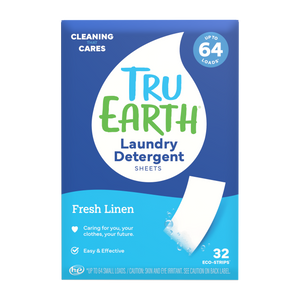A clean and sparkling porcelain sink is crucial in maintaining a fresh and inviting kitchen or bathroom space. Whether you have a classic white porcelain sink or a stylish colored one, regular cleaning and proper maintenance are essential to keep it looking its best. Over time, dirt, stains, and mineral deposits can accumulate, diminishing its shine and overall appeal.
In this guide, we will provide you with detailed steps and expert tips on how to effectively clean and care for your porcelain sink. From gentle cleaning solutions to targeted stain removal techniques, we will cover everything you need to know to ensure your porcelain sink remains in pristine condition. With our guidance, you can confidently tackle any cleaning challenge and keep your porcelain sink looking flawless for years to come.

What's The Hype About Porcelain Sinks?
Porcelain sinks are made from a mixture of clay, feldspar, and other minerals fired at high temperatures to create a durable and non-porous surface. They are known for their elegant appearance, resistance to stains, and long-lasting durability. However, porcelain sinks require proper care to prevent scratches, stains, and other forms of damage.
Choosing the Right Cleaning Supplies
To clean your porcelain sink effectively, gather the necessary cleaning supplies. Baking soda is a versatile and gentle abrasive that helps remove stains and grime without scratching the surface. White vinegar is a natural disinfectant that breaks down mineral deposits and removes tough stains. Dish soap is a mild yet effective cleanser for everyday maintenance.
It is important to use a soft sponge or cloth to avoid scratching the porcelain surface, and a toothbrush can be handy for cleaning hard-to-reach areas and crevices. Lemon juice, known for its natural acidic properties, can help dissolve stains and add a fresh scent. Lastly, a microfiber cloth is ideal for drying and buffing the sink to a shiny finish.
Proper Everyday Maintenance
To keep your porcelain sink clean on a daily basis, rinse it with warm water after each use to remove food particles and other debris. For regular cleaning, use a mild dish soap or a mixture of baking soda and water. Apply the cleaner to a soft sponge or cloth and gently scrub the sink's surface.
Avoid using harsh cleaners, bleach, ammonia, or scouring pads, as they can scratch or damage the porcelain finish. After cleaning, dry the sink thoroughly with a soft cloth or towel to prevent water spots and mineral buildup.
Removing Stains
Over time, your porcelain sink may develop stains that require targeted treatment. To remove mineral deposits and white or cloudy spots, create a paste with baking soda and white vinegar. Apply the paste to the affected areas, let it sit for a few minutes, and gently scrub with a soft sponge. Rinse the sink thoroughly and dry it.
Make a paste with lemon juice and baking soda for rust stains, apply it to the stained areas, let it sit, and gently scrub before rinsing and drying. Coffee or tea stains can be tackled by dampening a cloth with white vinegar, wiping the stained areas, and thoroughly rinsing and drying. Grease or oil stains can be removed with a dish soap or a mixture of baking soda and water. Apply the cleaner to a sponge or cloth, scrub gently, and rinse before drying the sink.
Dealing with Tough Stains
If regular cleaning methods fail to remove stubborn stains, you can try a few additional techniques. Dampen a cloth or sponge with hydrogen peroxide and gently rub the stained areas. Rinse the sink thoroughly and dry it.
If natural methods don't work, you may consider using a commercial porcelain cleaner specifically formulated for stain removal. Follow the manufacturer's instructions and use caution when handling these products.
Preventive Measures
To maintain the cleanliness and beauty of your porcelain sink and prevent future stains, consider implementing the following preventive measures. Use sink mats or liners to protect the sink's surface from scratches caused by pots, pans, and utensils.
Avoid using harsh chemicals, abrasive cleaners, or scouring pads that can damage the porcelain finish. Wipe up spills and stains promptly to prevent them from setting in and causing permanent damage. Incorporate regular cleaning and maintenance into your routine to keep your porcelain sink looking its best.

A Gleaming Finish
A clean and well-maintained porcelain sink has the potential to become the focal point of your kitchen or bathroom, radiating a sense of cleanliness and elegance. This guide provides you with invaluable tips and techniques to effectively clean and care for your porcelain sink, ensuring it remains beautiful and functional for years to come.
You can prevent any damage to the delicate surface by using gentle cleaners and avoiding abrasive materials. Remember to promptly address stains and implement preventive measures to maintain the sink's pristine condition. With proper care and attention, your porcelain sink will continue to shine, adding a touch of sophistication to your space and enhancing its overall aesthetic appeal.

